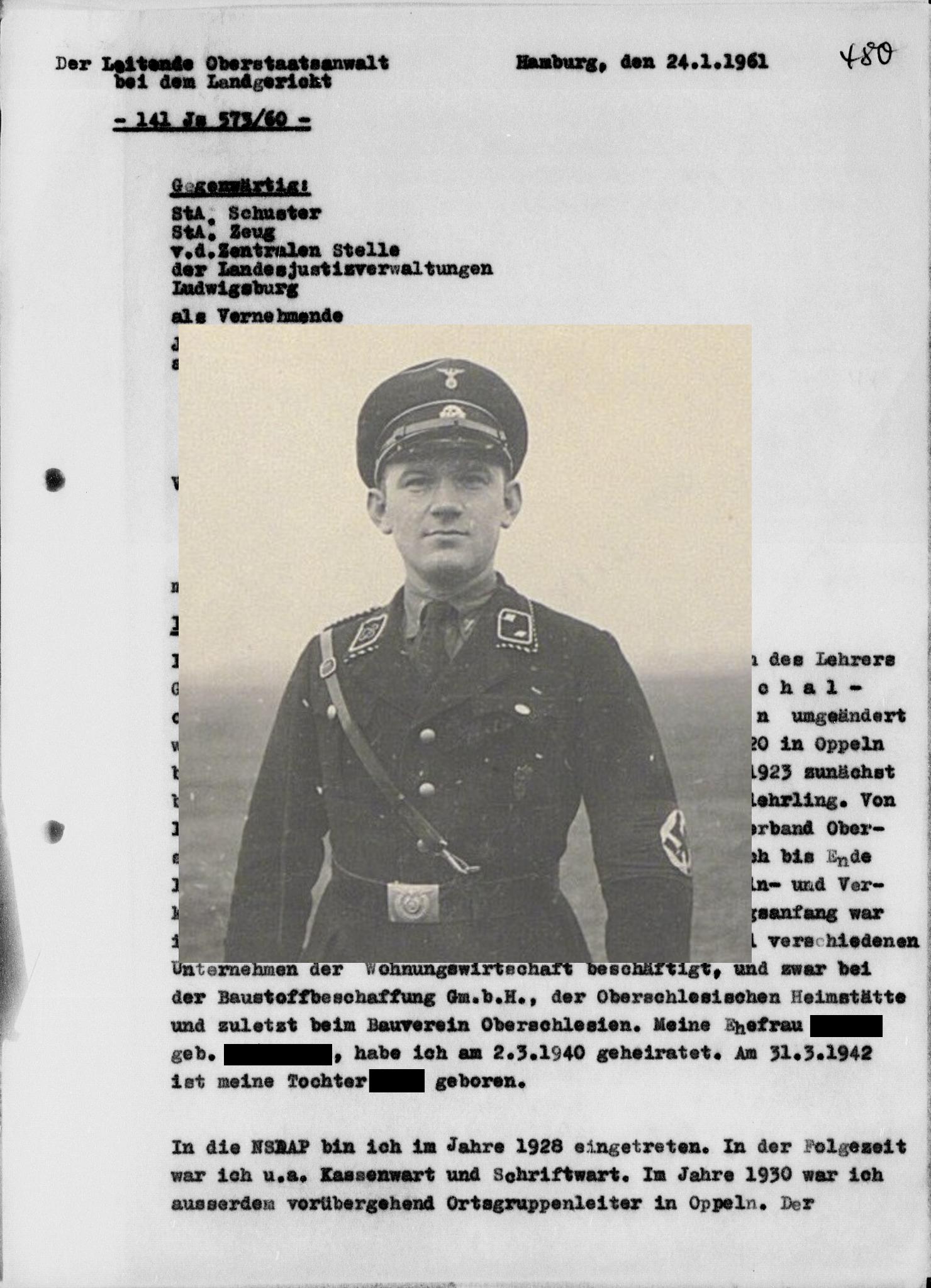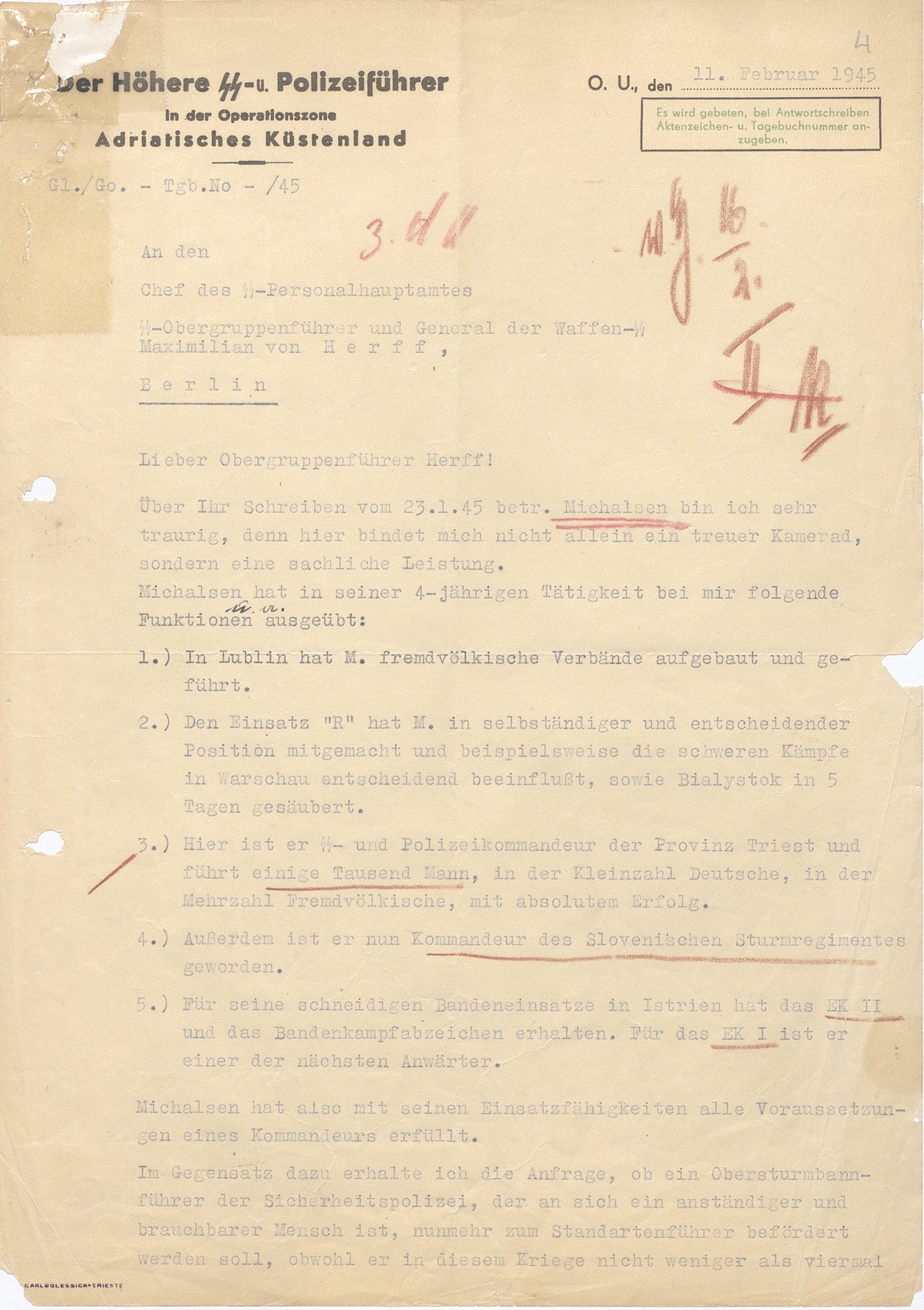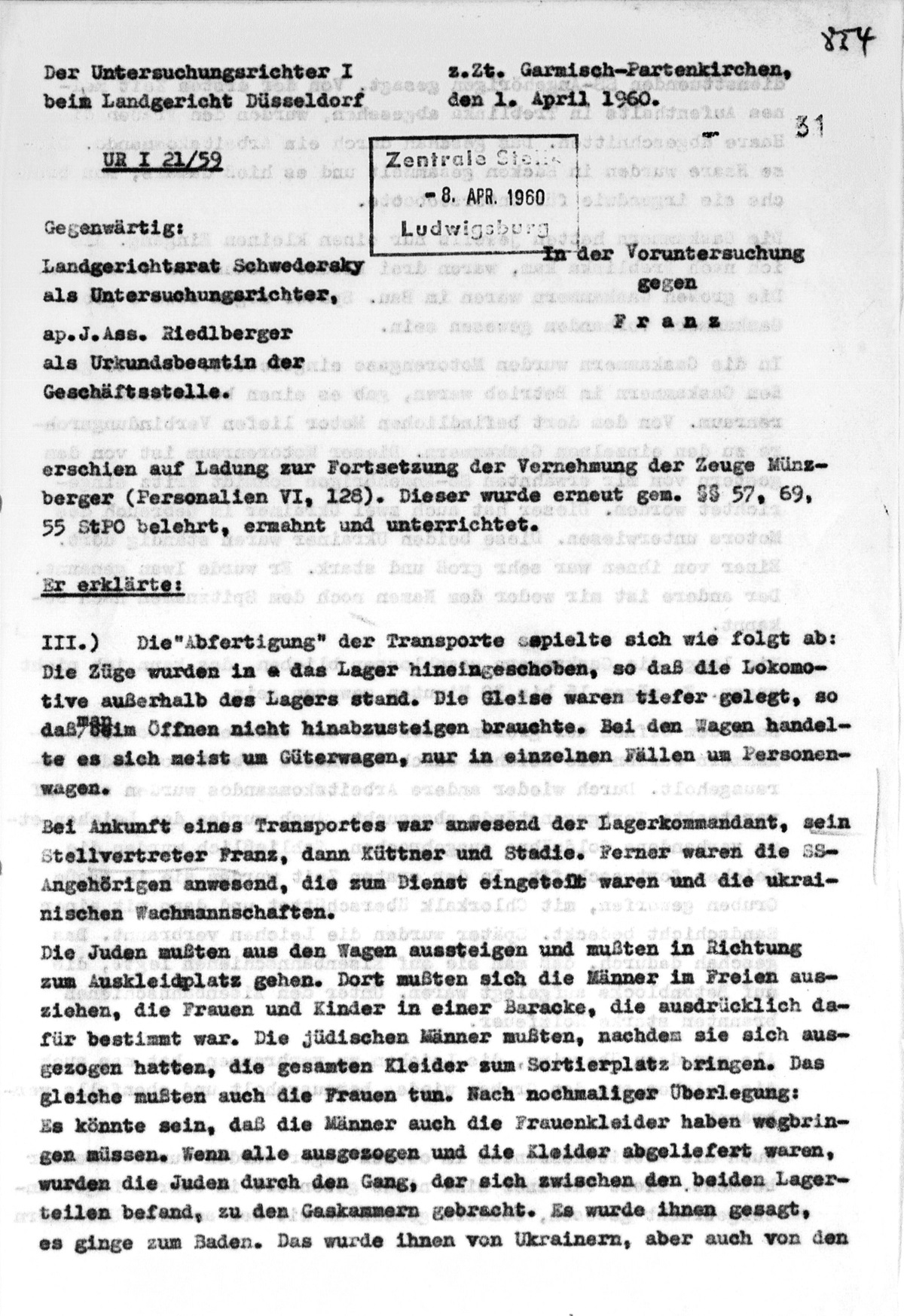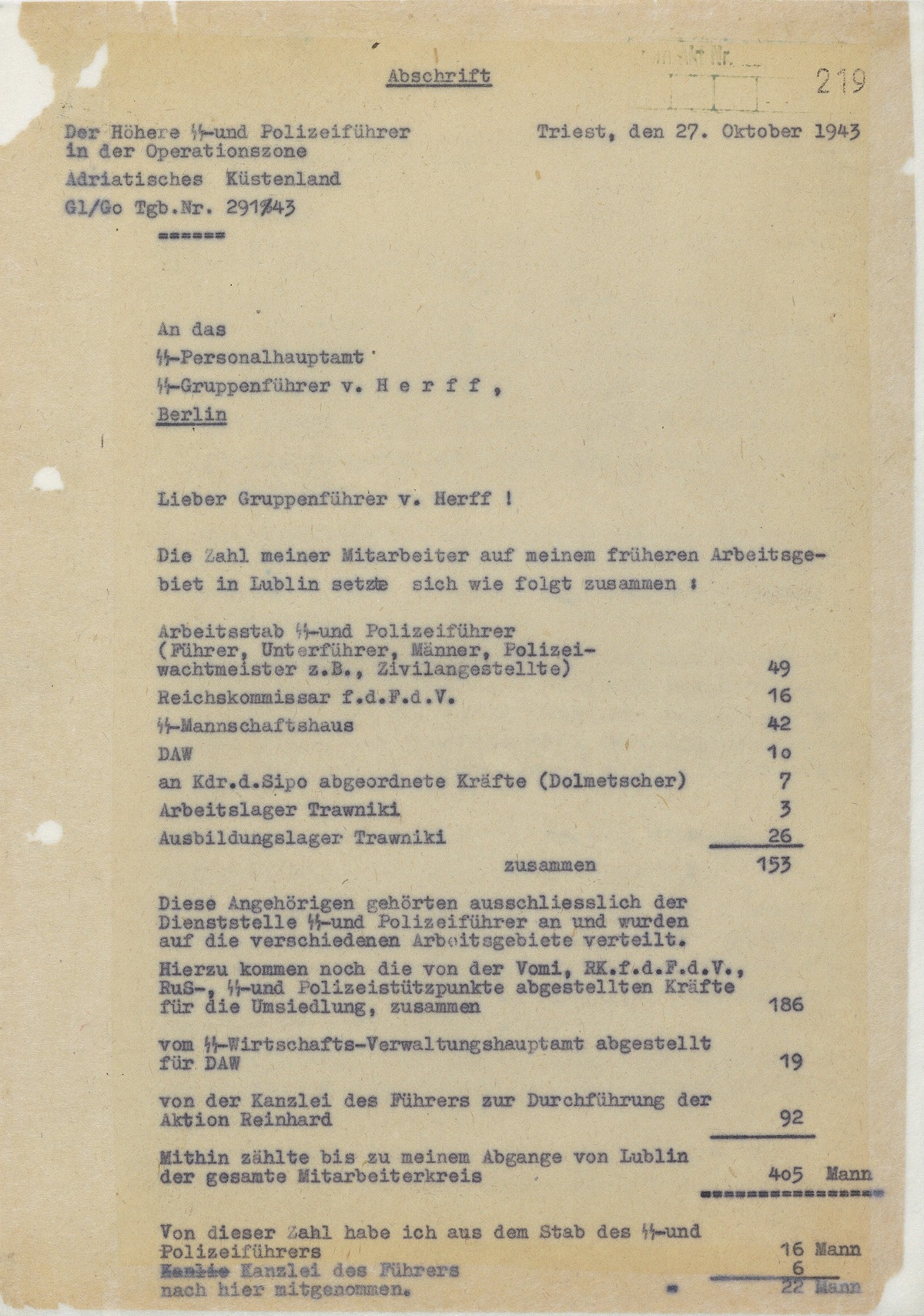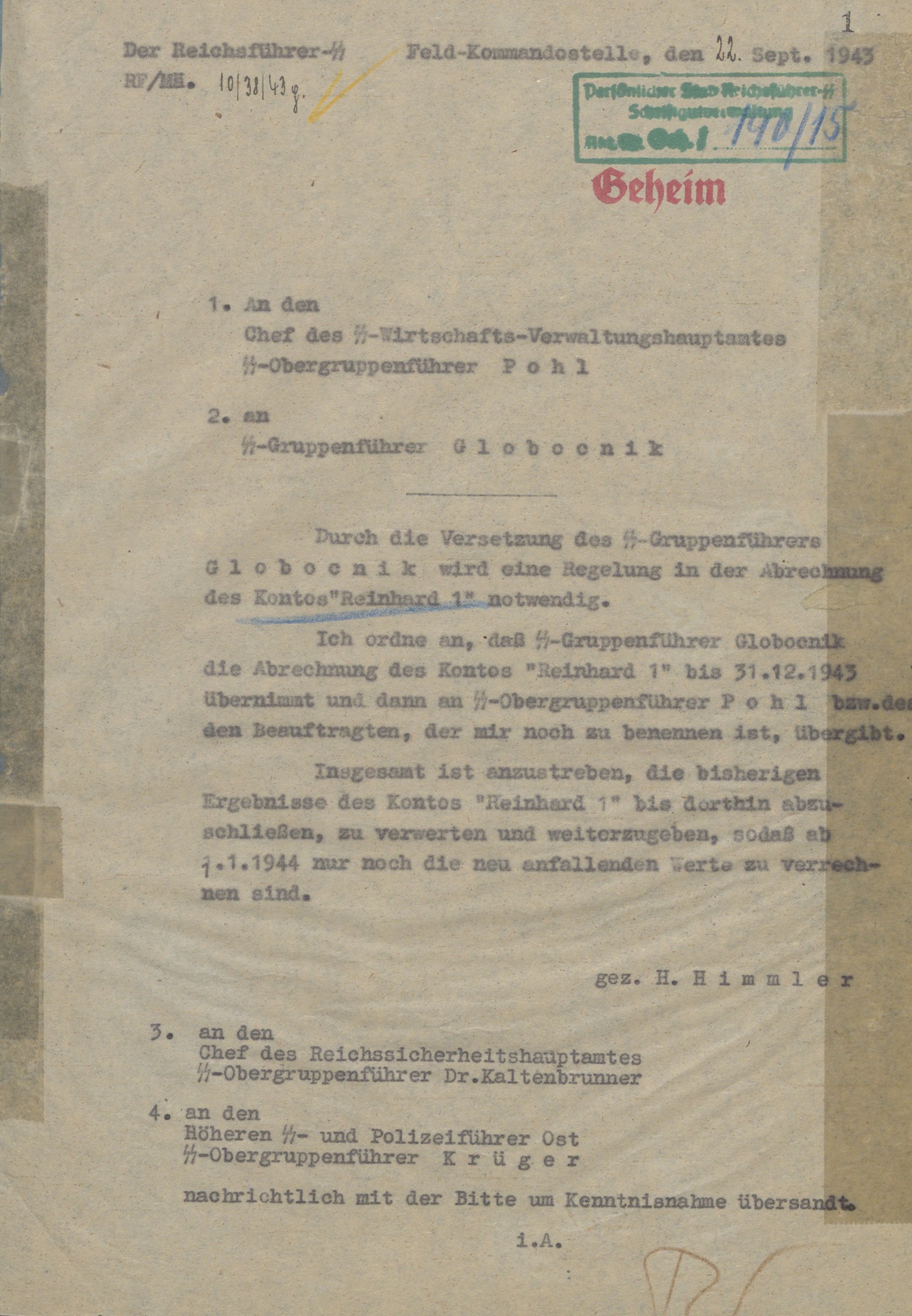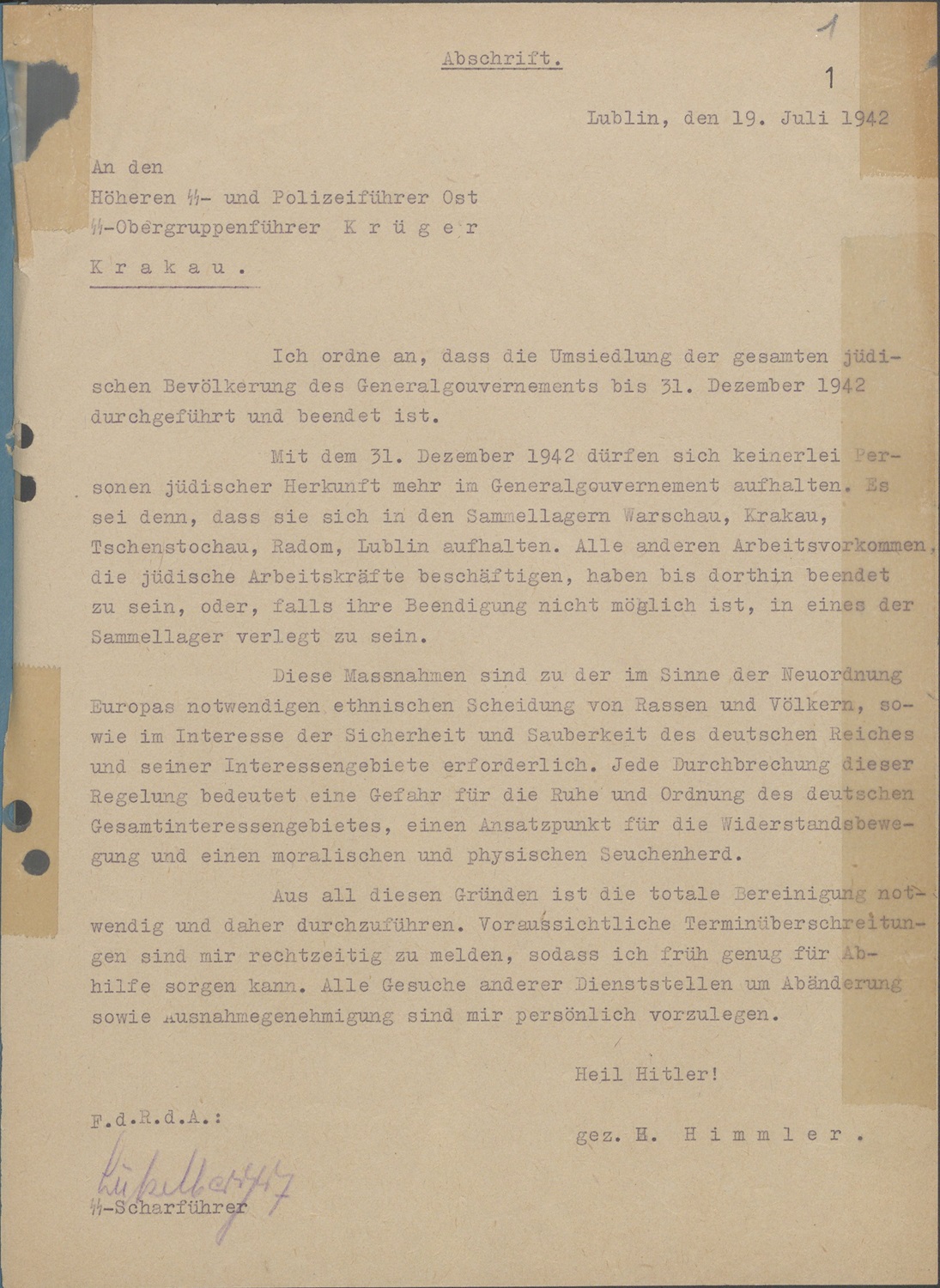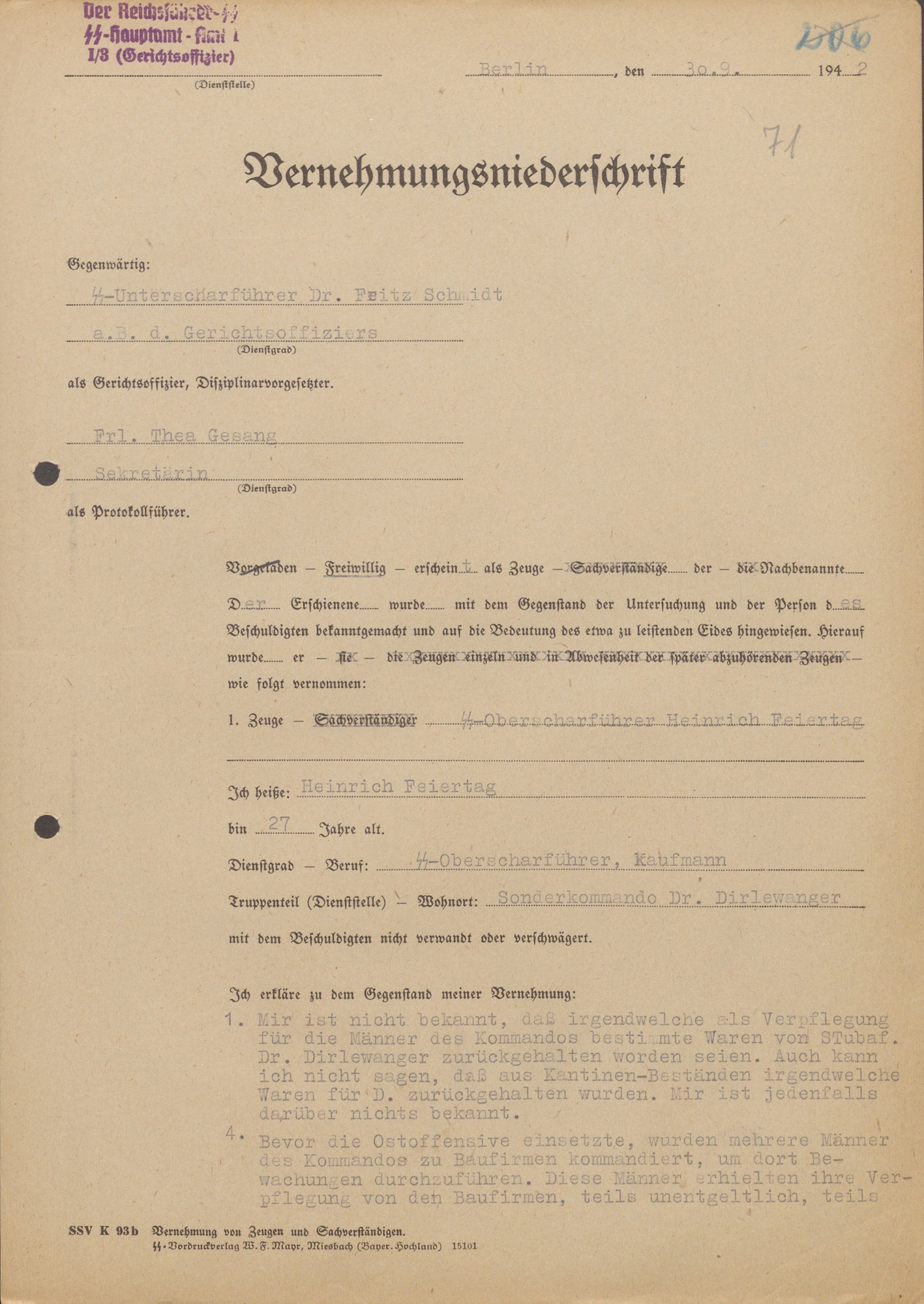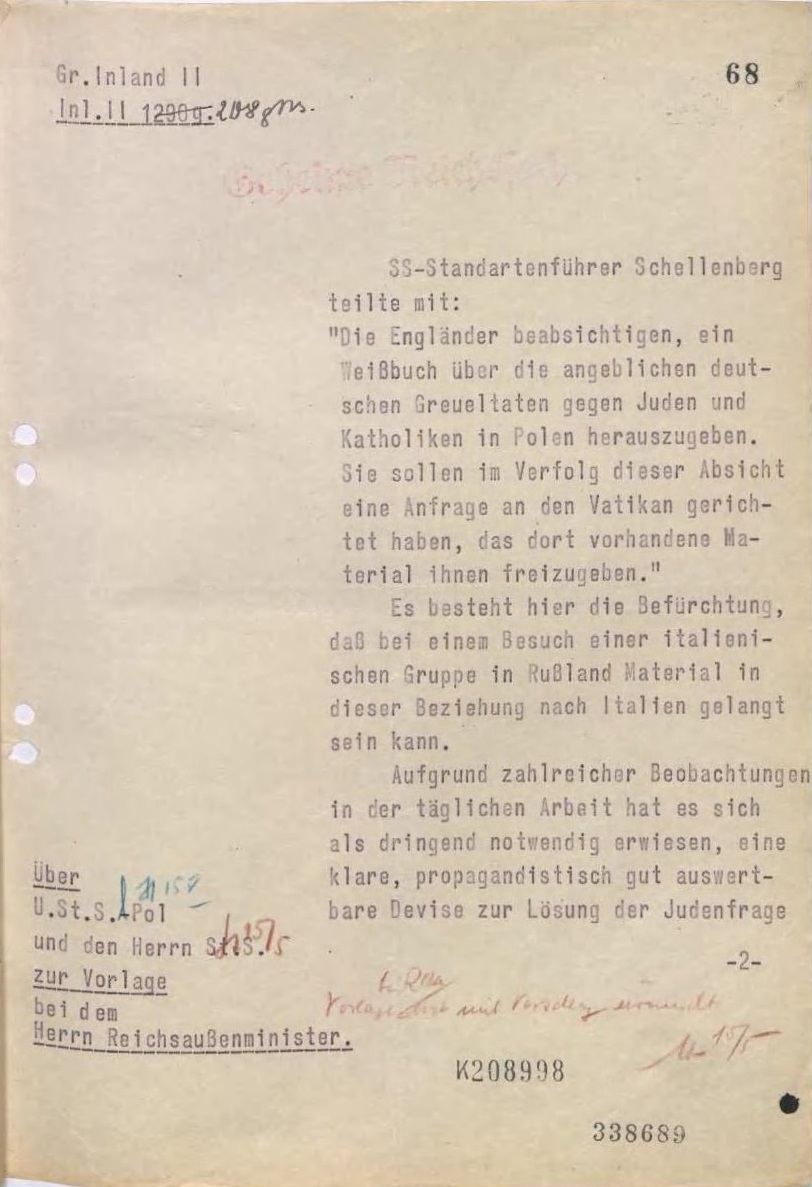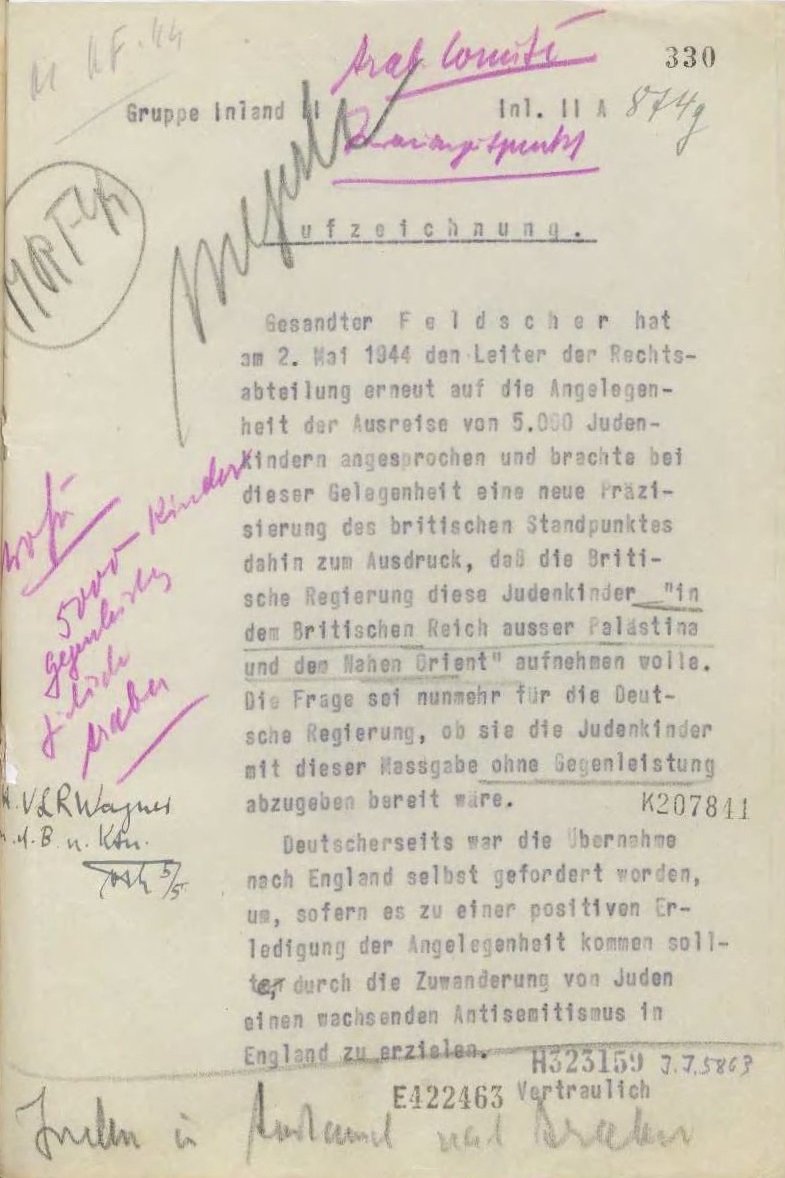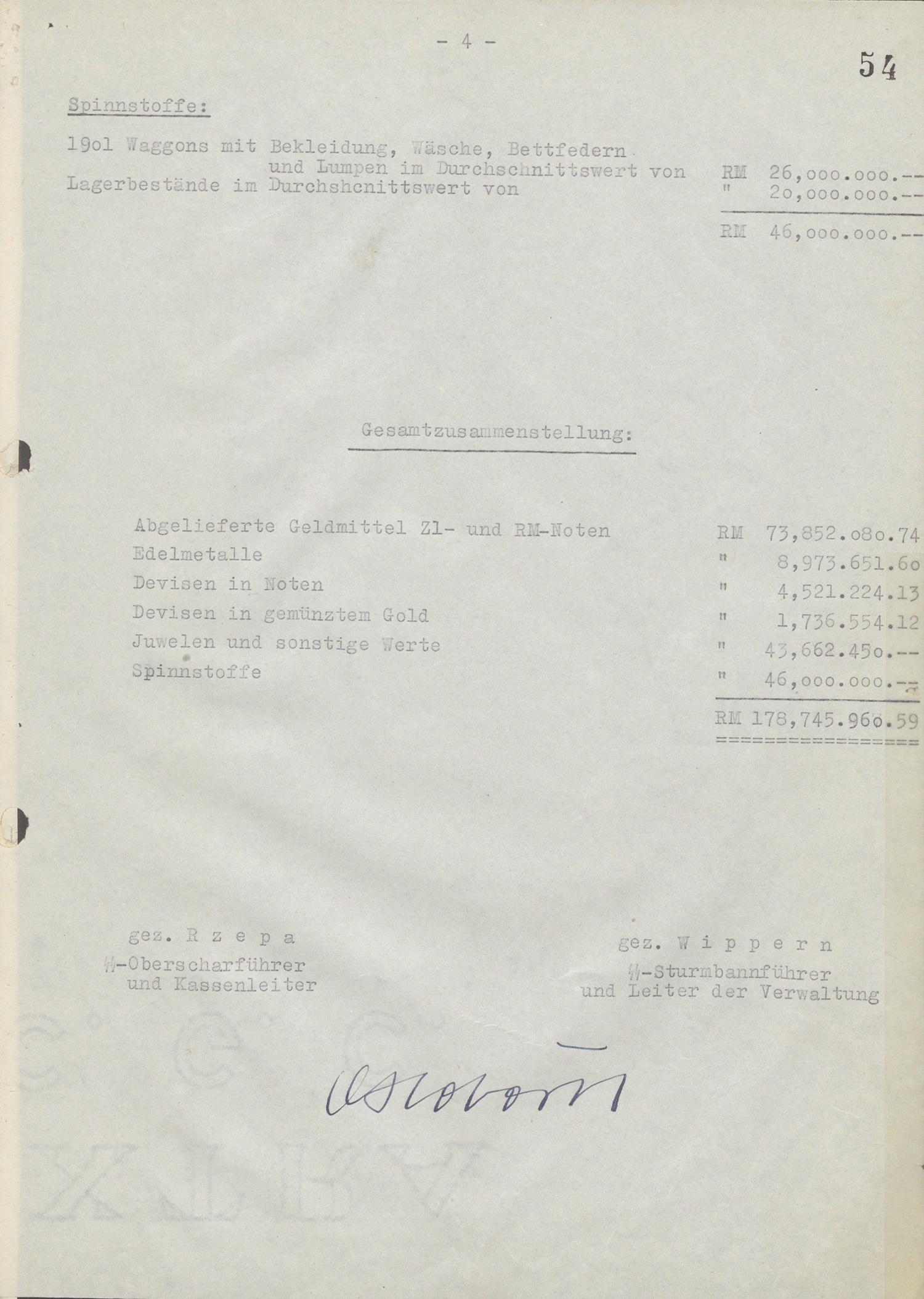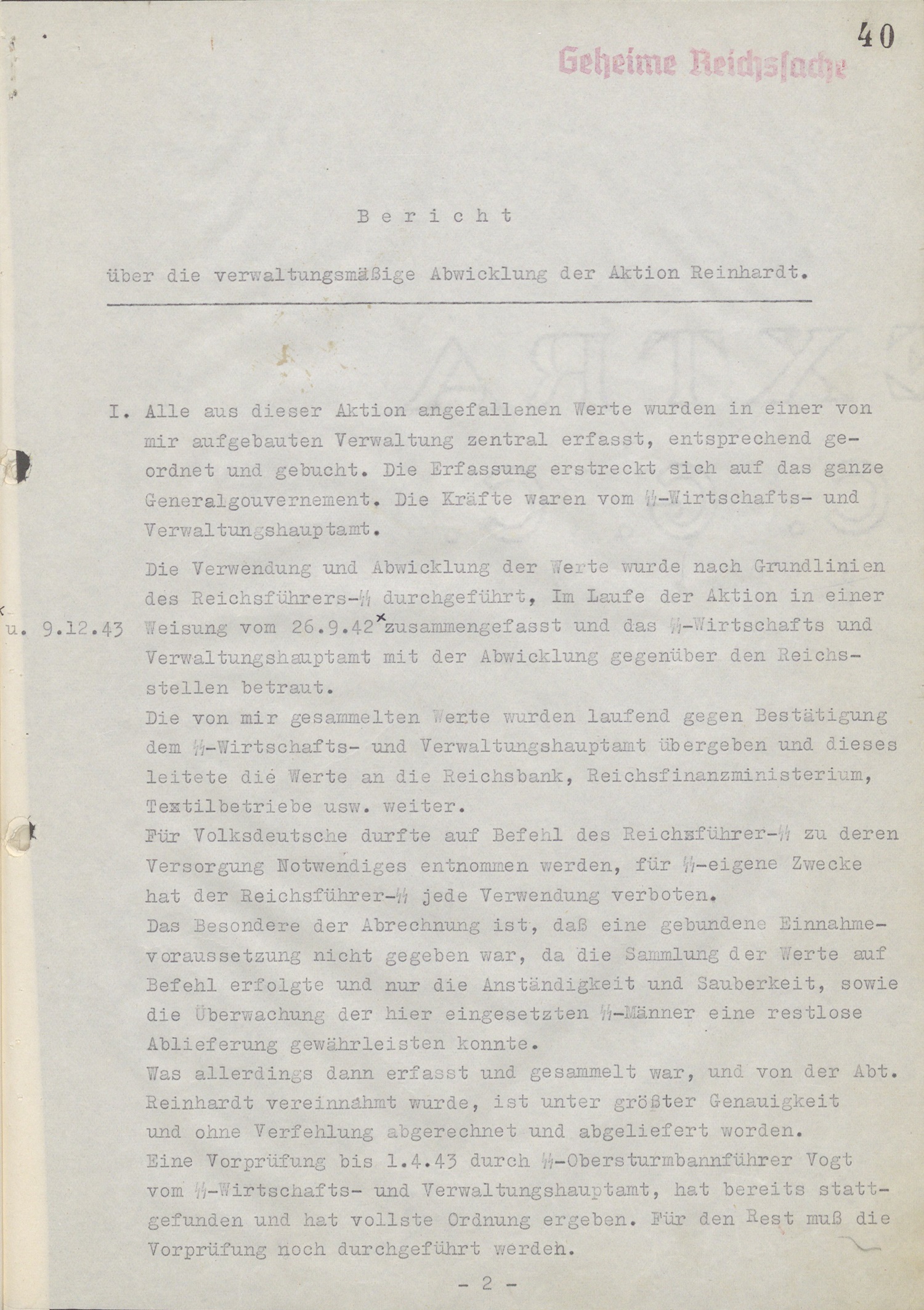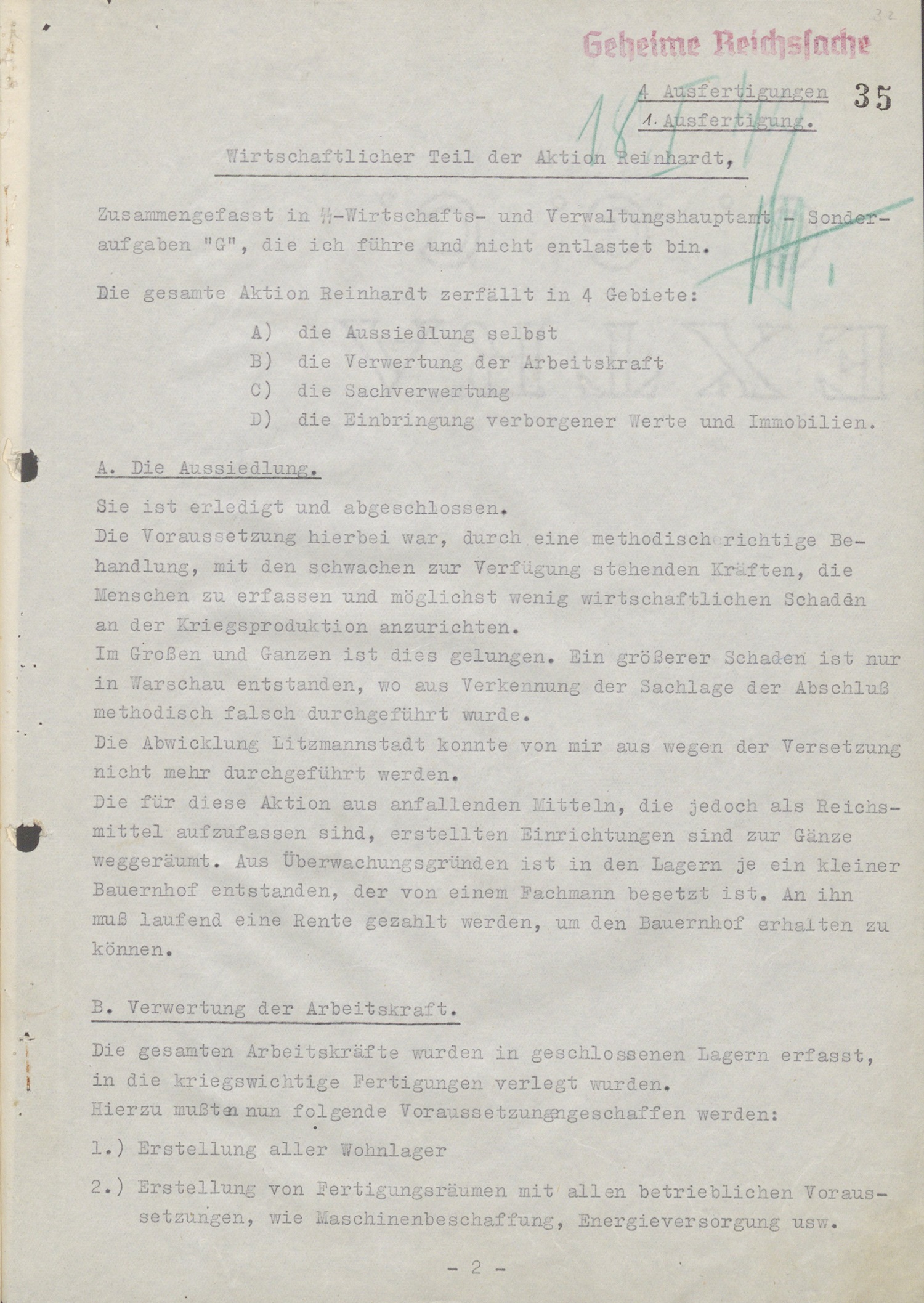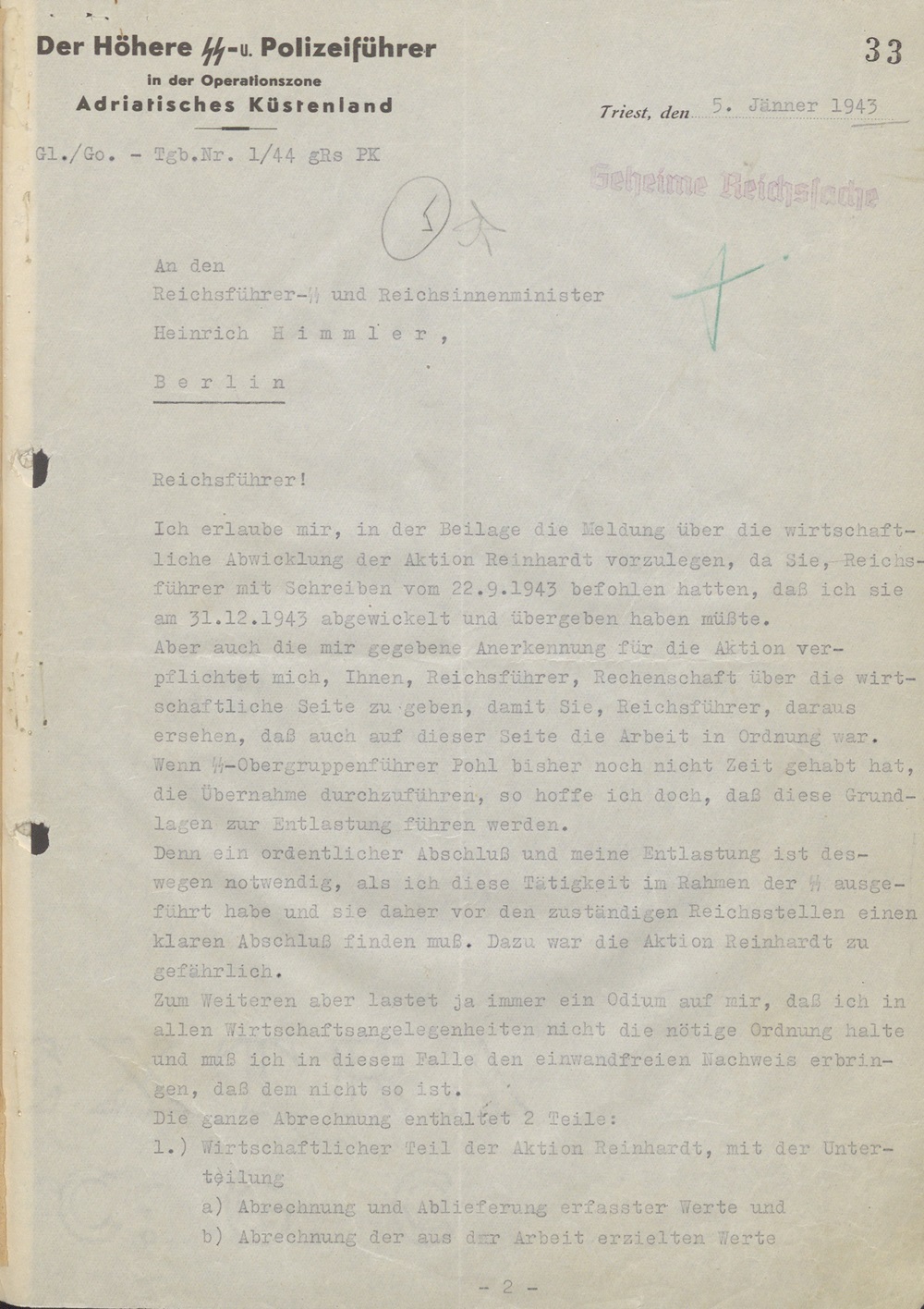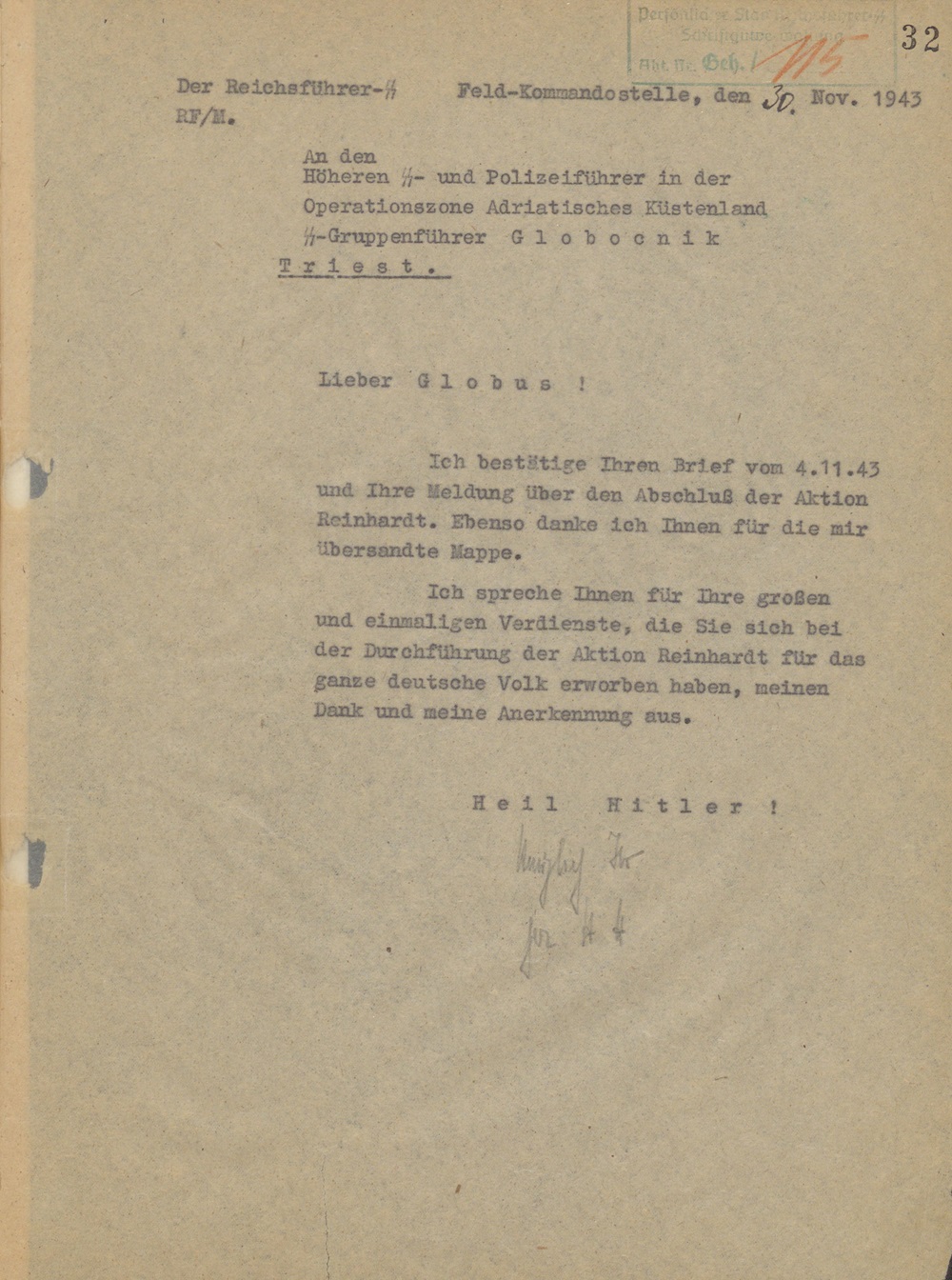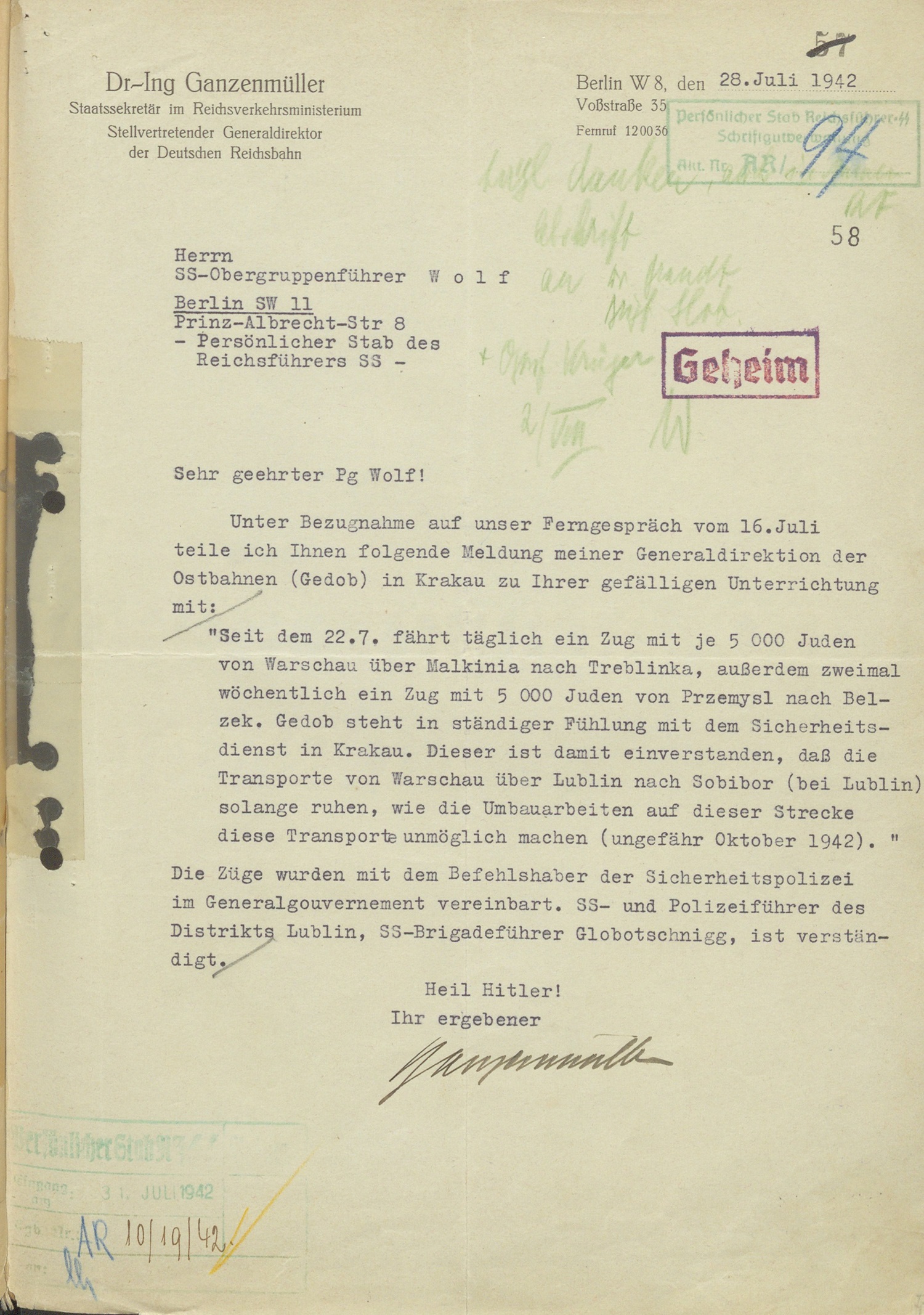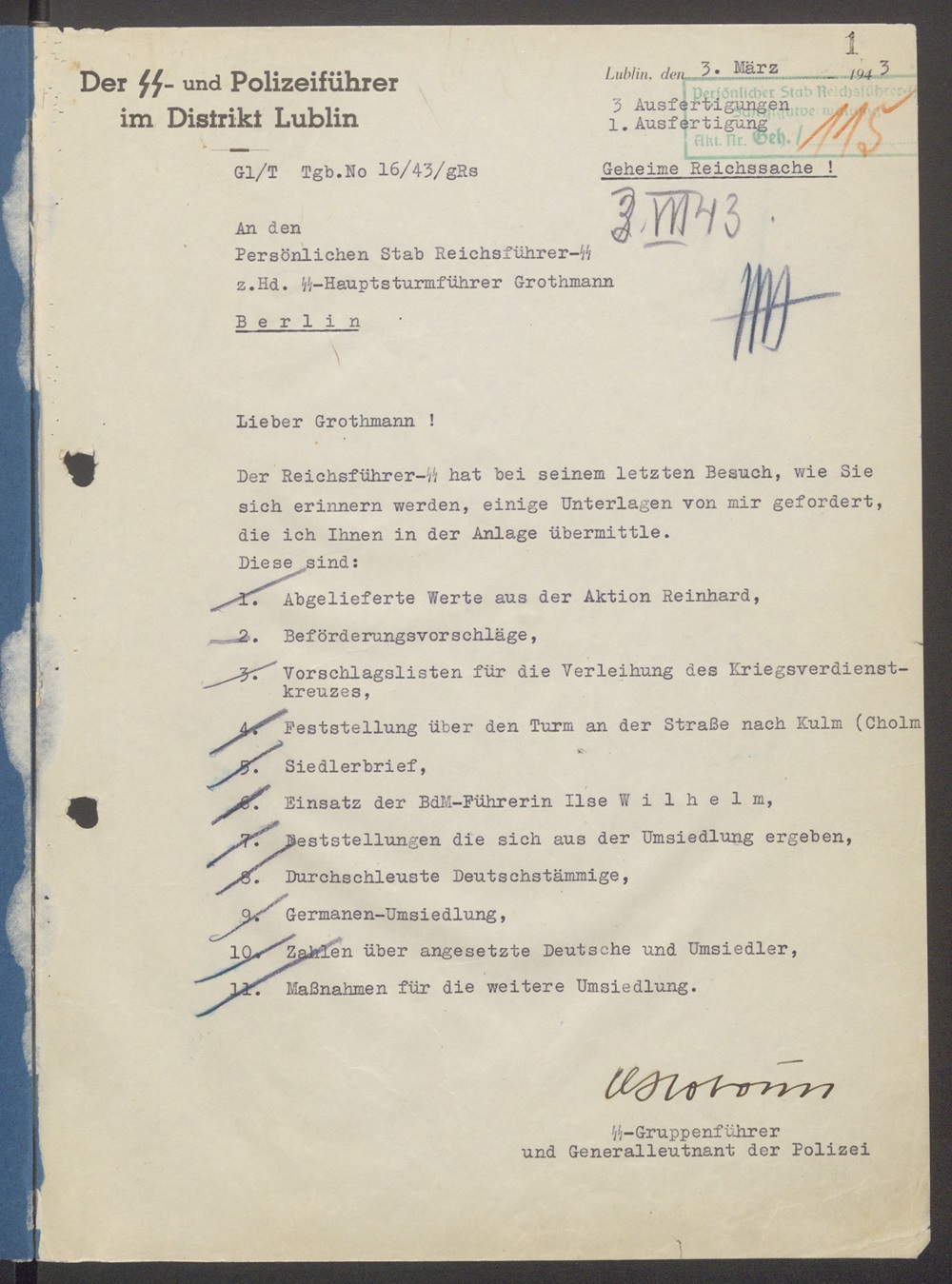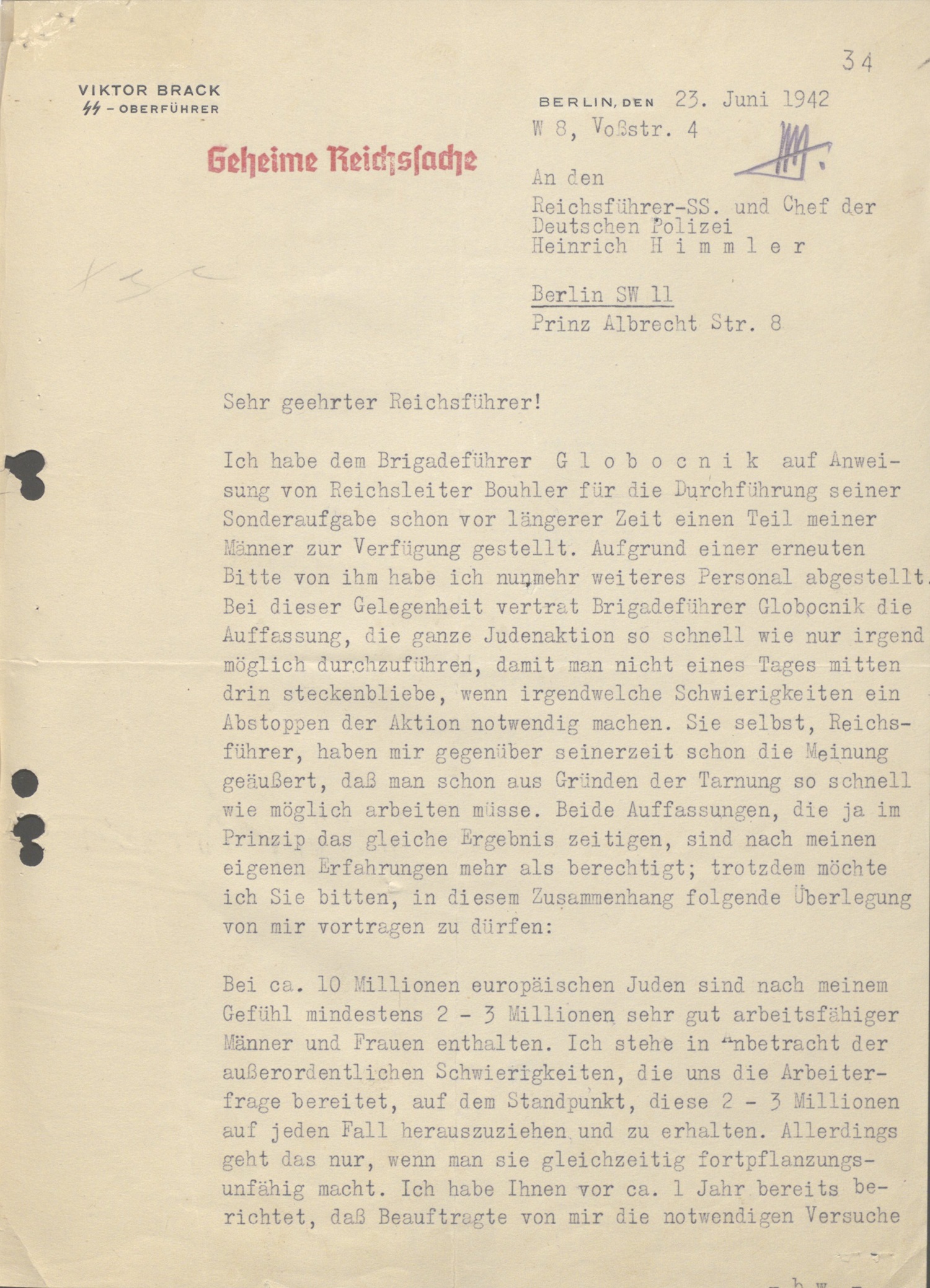On January 24, 1961, West German prosecutors interrogated Georg Michalsen, a former SS officer involved in Ghetto liquidations in the
A letter dated February 11, 1945, written by SS-Gruppenführer Odilo Globocnik—then Higher SS and Police Leader in the Adriatic Littoral—to
Interrogation transcript of former Treblinka extermination camp guard SS-Unterscharführer Gustav Münzberger, dated March 31 and April 1, 1960. In his
Copy of a letter dated October 27, 1943, from SS-Gruppenführer Odilo Globocnik to SS-Gruppenführer von Herff of the SS Personnel
On 11 January 1943, SS-Sturmbannführer Hermann Höfle, coordinator of Operation Reinhard(t), sent top-secret telegrams on its death toll to SS
On September 22, 1943, the Reichsführer-SS Heinrich Himmler issued a directive on the accounting of the "Reinhard 1" account due
A form sheet by SS-Sturmbannführer Hermann Höfle dated July 18, 1942, on the individual's responsibilities and strict secrecy surrounding their
In 1942, the SS Main Office pursued an investigation into Oskar Dirlewanger, commander of the notorious penal unit, Sonderkommando Dirlewanger.
On July 19, 1942, Heinrich Himmler, the Reichsführer of the SS, issued a directive ordering the complete "resettlement of the
1942-09-30 Poison and Human Soap – SS Investigator Interrogates Member of Sonderkommando Dirlewanger
Interrogation report dated September 30, 1942, documenting the questioning of SS-Oberscharführer Heinrich Feiertag by an SS court officer regarding allegations
In May 1943, Walter Schellenberg, head of RSHA Office VI (Ausland – SD-Ausland), informed the German Foreign Office of Britain’s
The Feldscher Aktion, named after Swiss diplomat Peter Anton Feldscher, represented a significant diplomatic effort by the British government during
Memo by SS-Sturmbannführer Herbert Strickner, head of RSHA Department III (Volkstum, or Ethnicity), analyzing occupation policy from 1939 to 1944
Operation Reinhardt (also Reinhard), a Nazi campaign to exterminate Jews in the Generalgouvernement region of occupied Poland, systematically seized the
According to a radio message from September 15, 1942 and a trip report dated September 17, 1942, on 16 September
1942-08-13 Letter from Wolff to Ganzenmüller on Deportations of Jews to Treblinka Extermination Camp
The following document, dated August 13, 1942, is SS-Obergruppenführer Karl Wolff's response to an earlier letter from Albert Ganzenmüller, Deputy
Odilo Globocnik's report, enclosed in his January 5, 1944 letter to Reichsführer-SS Heinrich Himmler, details the "administrative processing of Operation
Report by Odilo Globocnik on the "economic part of Operation Reinhardt" enclosed in his letter of January 5, 1944 to
In a letter dated January 5, 1944, the Higher SS and Police Leader Odilo Globocnik, addressed Reichsführer-SS Heinrich Himmler regarding
In this letter dated 30 November 1943, Heinrich Himmler replied to Odilo Globocnik letter of 4 November 1943 and acknowleged
On 4 November 1943, Odilo Globocnik reported to Heinrich Himmler the completion of "Operation Reinhardt, which I led in the
On July 28, 1942, Albert Ganzenmüller, State Secretary in the Reich Ministry of Transport and Deputy Director General of the
The following set of documents was provided on 3 March 1943 by the SS- and police leader of Lublin Odilo
On 23 June, 1942, SS-Oberführer Viktor Brack from Hitler's Chancellory wrote to Heinrich Himmler on the matter of mass sterilisation
